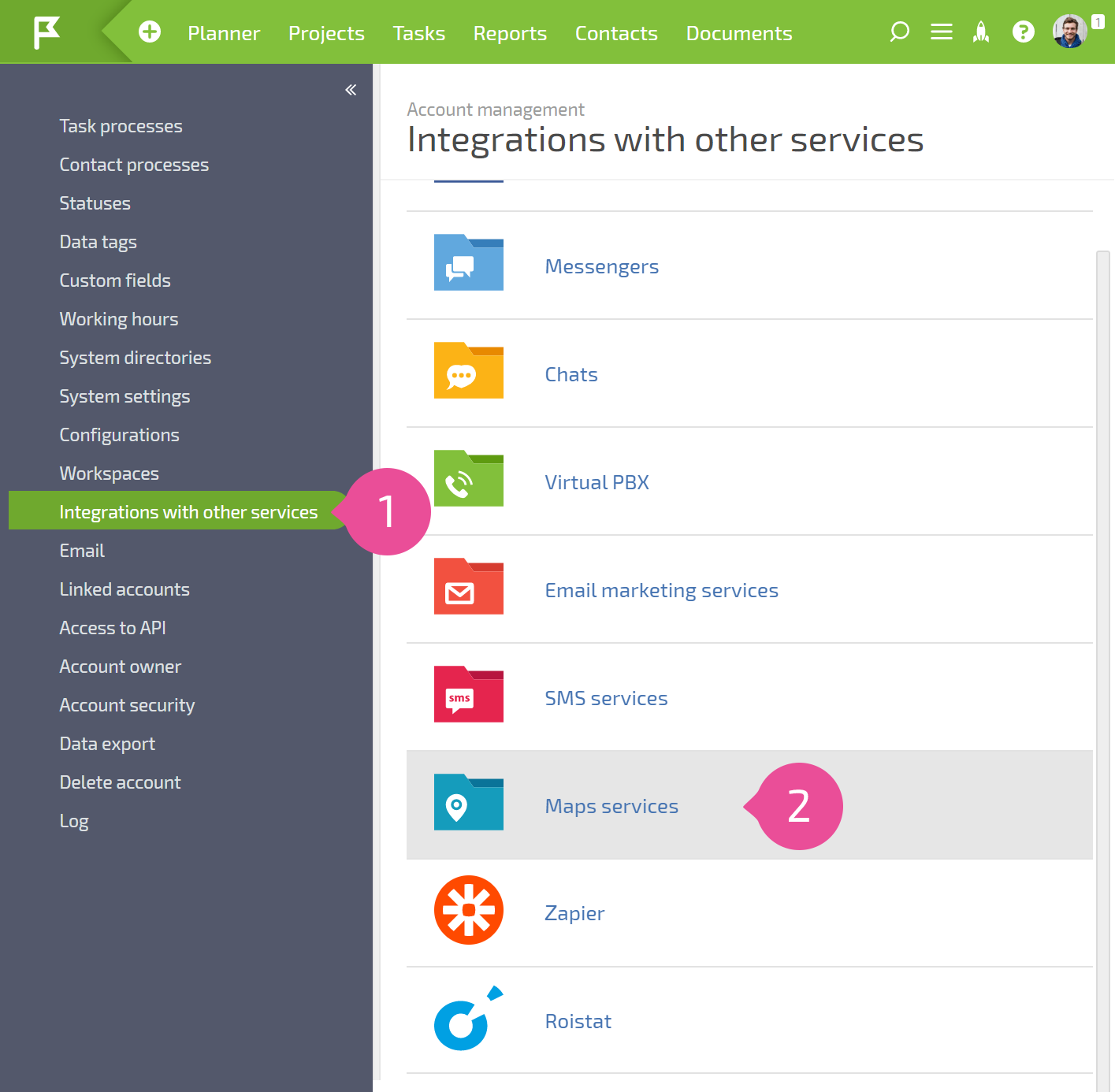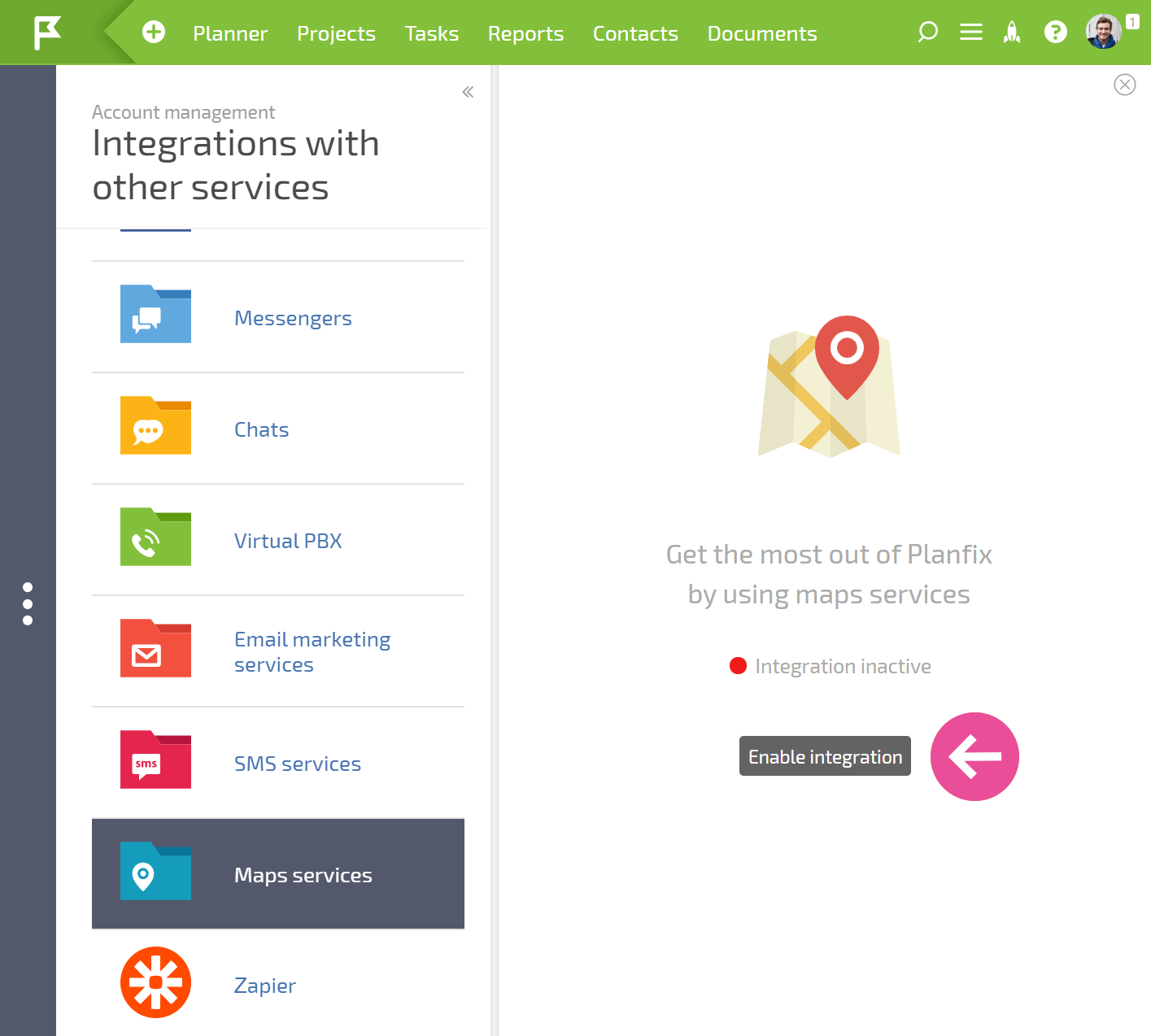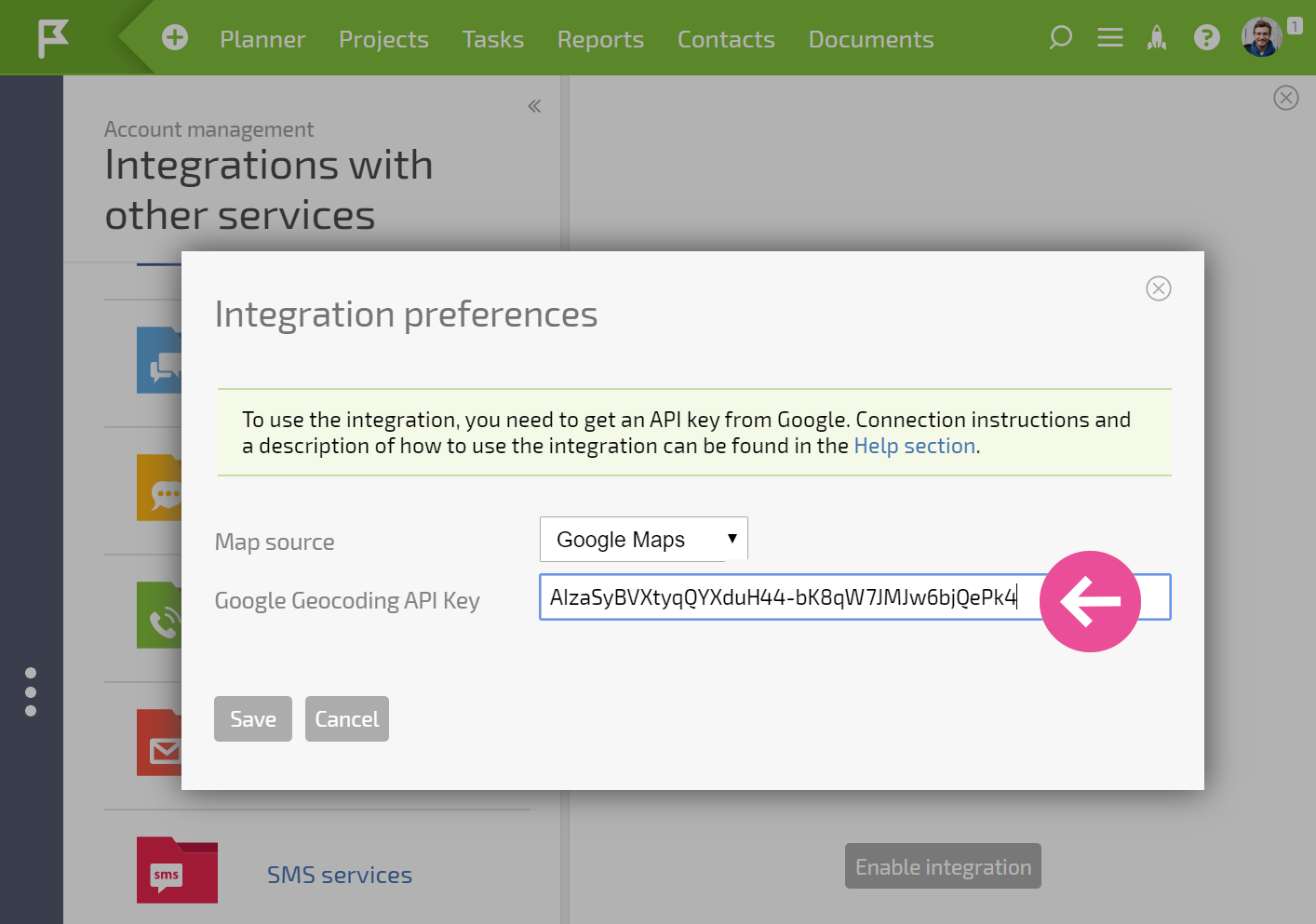Maps Integration: Difference between revisions
From Planfix
No edit summary |
No edit summary |
||
| Line 31: | Line 31: | ||
==Working with maps== | ==Working with maps== | ||
*After enabling the integration, addresses and object names entered in Location custom fields will be displayed on the selected map in addition to being displayed as text: | *After enabling the integration, addresses and object names entered in [[Location custom fields]] will be displayed on the selected map in addition to being displayed as text: | ||
Revision as of 02:00, 11 October 2019
Planfix can display addresses and routes on maps. Addresses (or object names) are entered as text in Location custom fields. Objects can be displayed on a map in task cards, contact cards, task filters, and contact filters.
Supported maps
Currently, addresses on Google Maps and OpenStreet Maps are supported. The Google Maps API is used to process text addresses and translate them into geodata for display, so you need to have a Google account in order to connect the maps integration.
Enabling integration
- Go to Account management / Integrations / Maps
- Click Enable integration
- Select one of the supported maps and enter the Google Geocoding API Key obtained by connecting to the Google Maps API



- Save your settings
Working with maps
- After enabling the integration, addresses and object names entered in Location custom fields will be displayed on the selected map in addition to being displayed as text:
